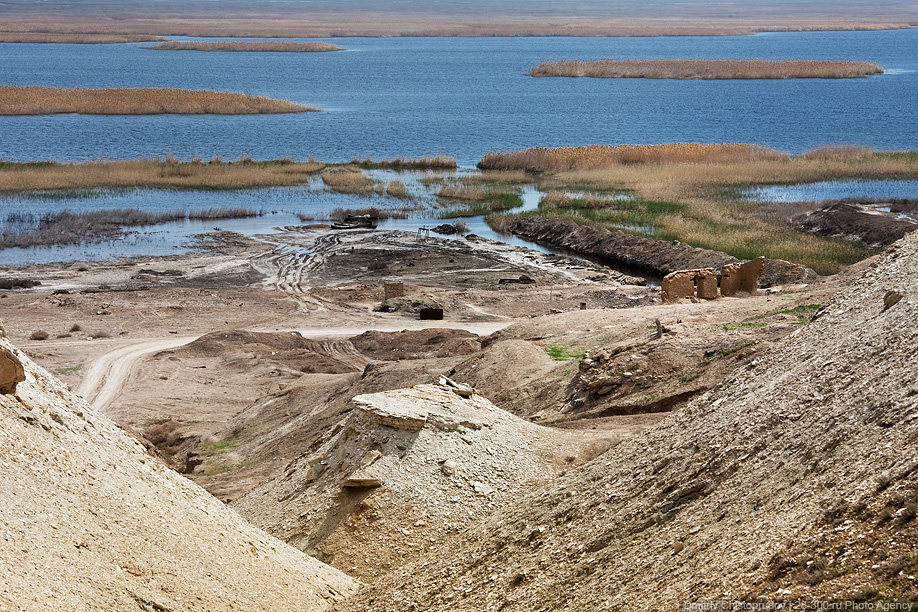

In contrast to this, during the phases of arid climate, both rivers became
low-water,
the level of the Aral also fell
and the degree of salinization of the Aral Sea region increased. In historical time since the
existence of ancient Khorezm
level changes depended, to some extent, on climate change, but mainly on irrigation
activities in the region along both rivers.
The development of irrigation initiated by the Russian government has received an
unprecedented acceleration
in Soviet times. But until 1960, the withdrawal of water for irrigation was accompanied by the
growth of collector networks and
respectively, the growth of return waters, resulting in significant changes in river deltas and in
the sea did not occur. It was found that the saturation of the Aral waters with calcium sulfate and
the beginning
gypsum precipitation occurs at salinity exceeding 25-26 g/l. However, the most intensive
gypsum began at a salinity above 34-36%.Under these conditions, simultaneously with the
precipitation of gypsum in winter
period, sedimentation of mirabilite occurs, which poses the greatest danger to nature
Aral Sea. Dehydrated sodium sulfate is susceptible to wind erosion and can be easily moved to
long distances.
The main consequences of the drying up of the Aral Sea, in addition to a decrease
in volume,
surface, growth and changes in the nature of mineralization were manifested in the formation of a
drained
the bottom of a huge salt desert with an area of almost 4.5-5.0 million hectares by now. As a
result,
a unique freshwater reservoir has given way to a huge bitter-salty lake in combination with
colossal salty desert at the junction of three sandy deserts.